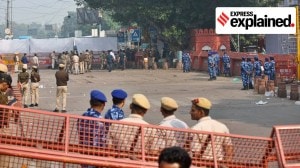Bytes of the IT Pie
It’s easy to forget how quickly the dramatic transformation of information technology has changed our, and the world’s, view of In...

It’s easy to forget how quickly the dramatic transformation of information technology has changed our, and the world’s, view of India. A decade-and-a-half ago, in the late 1980s and early 1990s, the late posterboy of software Dewang Mehta likened his job to an evangelist seller of dreams to a sceptical audience. Looking at the Rs 60,000-crore IT industry today, it would appear the old debates over the benefits of IT have been well and truly ended.
But the reality is that economic and social views on the IT sector have been constantly changing — and continue to do so. If the computer is completely accepted, and even worshiped, in this country as a tool of learning, there’s also considerable disillusionment about the lack of jobs for thousands of people who have invested in IT education. If there persists a view that the BPO segment is building an army of techno “coolies”, there’s also the reality that it has financially empowered a younger generation like never before. Being at the bottom of the ladder is better than not being on it at all.
Most importantly, the recent electoral verdicts in IT-friendly states like Andhra Pradesh and Madhya Pradesh have been perceived by some as a verdict against urban-centric IT. And that’s where S.S. Gill fails to take issue. Only one-fifth of the book is devoted to the IT scene in India. And even here, Gill shies from taking a stand as he feels the states have “just started using IT” for the “betterment of society”. Surely, more needs to be said.
Gill’s chapter on IT in government focuses on well-known success stories like NICNET, the Indian railways, postal services, and the courts. Gill argues that the digital divide between the northern and southern part of the country will only increase. He also talks about the absence of highly-qualified technocrats. These areas should — and will — be the focal point of the debate over how we, as a nation, are using IT.
Examples abound of how IT is helping certain states reach the people. Even though Gill says he travelled extensively for this research, one wishes that he would go beyond official brochures. One has to search for interesting vignettes — for instance, how the government pushed through computerisation of land records in Karnataka in the face of reluctant employees. The solution: private data entry agencies were hired; a new category of talatis (revenue officials) were groomed; and all manually-prepared land records were declared illegal when the system kicked off.
Another example — of ITC’s e-chaupals — deserved more space than just a page. In a revolutionary concept, ITC is marginalising the middleman by forging a direct computer link between farmers and mandis. The company has got a good response in Madhya Pradesh, Andhra Pradesh, Karnataka, and Uttar Pradesh. It is also looking at using the network to market fast-moving consumer goods to farmers.
Gill should have heeded his own words and spun off the IT revolution in India into a separate book. A strong, exhaustive critique of IT in India is still needed.





- 01
- 02
- 03
- 04
- 05


























